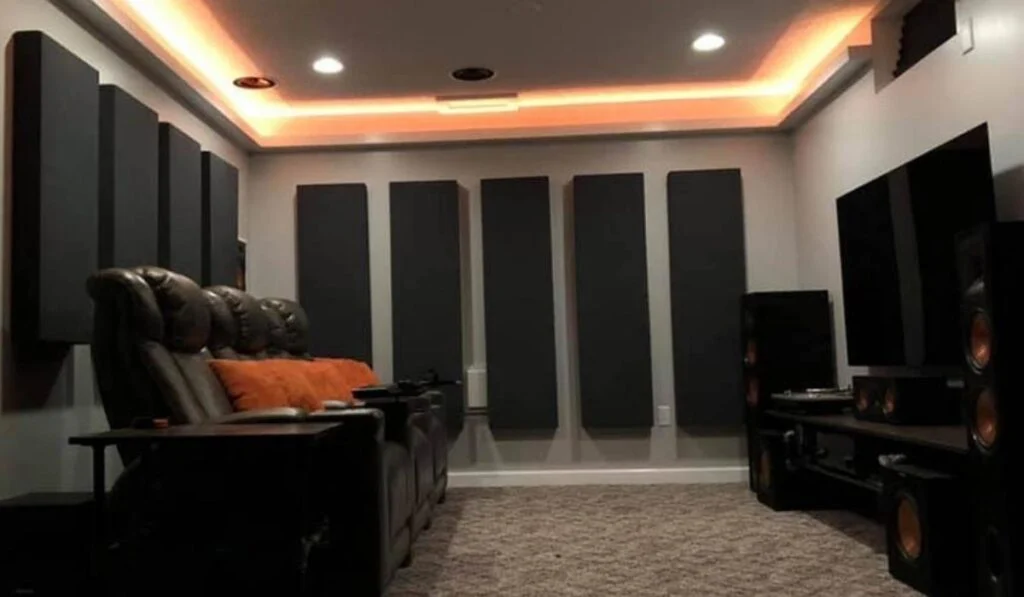When it comes to creating a soundproof environment, acoustic panels play a vital role in reducing unwanted noise and achieving high-quality sound. They are an essential component of any room where audio is a priority, such as studios, conference rooms, home theaters, and music practice rooms. Installing acoustic panels can be a challenging task for many individuals, especially those with no prior experience in soundproofing. With dozens of acoustic panel types and installation methods available, it can be overwhelming to choose the right one that suits your needs.
However, by following a few basic guidelines, you can install acoustic panels in your room like a professional.
- Determine the optimal panel placement.
When it comes to installing acoustic panels in a room, determining the optimal panel placement is a critical step to achieve the best possible sound quality. The placement of the panels can have a significant impact on the overall acoustics of the room, and can either enhance or detract from the sound quality.
The first step in determining the optimal panel placement is to identify the primary sound sources in the room and their corresponding reflection points. This information can be gathered through a variety of methods, including acoustic measurement tools or simply by ear.
Once the reflection points have been identified, the optimal panel placement can be determined based on the room’s dimensions, the listener’s position, and the desired sound quality. Proper panel placement can drastically improve the overall sound quality of a room and is a crucial consideration for any acoustic treatment project.
- Consider the room’s dimensions.
When installing acoustic panels in a room, one of the key considerations to keep in mind is the room’s dimensions. The size of the room will have a significant impact on how many panels are needed to achieve the desired level of sound absorption. In general, larger rooms will require more panels, while smaller rooms may require fewer.
It’s important to consider the room’s shape and layout, as irregular shapes may require additional panels to address any sound reflection issues. By taking the time to carefully assess the room’s dimensions and characteristics, you can ensure that you install the right number and configuration of acoustic panels to achieve optimal sound quality.
- Use proper mounting hardware.
The type of mounting hardware needed will depend on the weight and size of the panels, as well as the type of wall they will be mounted on. It is recommended to use hardware that is specifically designed for acoustic panels, such as Z-clips or impaling clips.
These types of hardware provide a secure and flush mount to the wall, while also allowing for easy removal and repositioning of the panels if needed.
Using improper mounting hardware can result in the panels falling off the wall, causing potential damage or injury. Therefore, it is crucial to carefully choose and properly install the appropriate hardware for the acoustic panels to ensure optimal acoustic performance and safety.
- Test the acoustics before finishing.
When installing acoustic panels in a room, it is important to test the acoustics before finishing. This ensures that the panels are placed in the most effective positions to achieve optimal sound quality.
To test the acoustics, you can use a sound level meter or a smartphone app that measures decibel levels. Place the panels in various locations throughout the room and measure the sound levels in each location. This will help you identify any problem areas where the sound may be too loud or too quiet.
Once you have identified these areas, you can adjust the placement of the panels accordingly to achieve a balanced sound. Testing the acoustics before finishing will save you time and money in the long run, as it will ensure that your acoustic panel installation is done correctly the first time.
- Consult with an acoustic professional.
If you’re looking to install acoustic panels in a room, it’s essential to consult with an acoustic professional. An acoustic professional can guide you through the installation process and ensure that the correct materials are used for your specific space. They can also assess the sound quality of your room and recommend the best placement for the acoustic panels to achieve optimal sound quality.
An acoustic professional can provide valuable insight into the different types of acoustic panels available on the market and how they can benefit your specific needs. Overall, consulting with an acoustic professional can help ensure that your acoustic panel installation is successful and results in the desired sound quality for your space.

